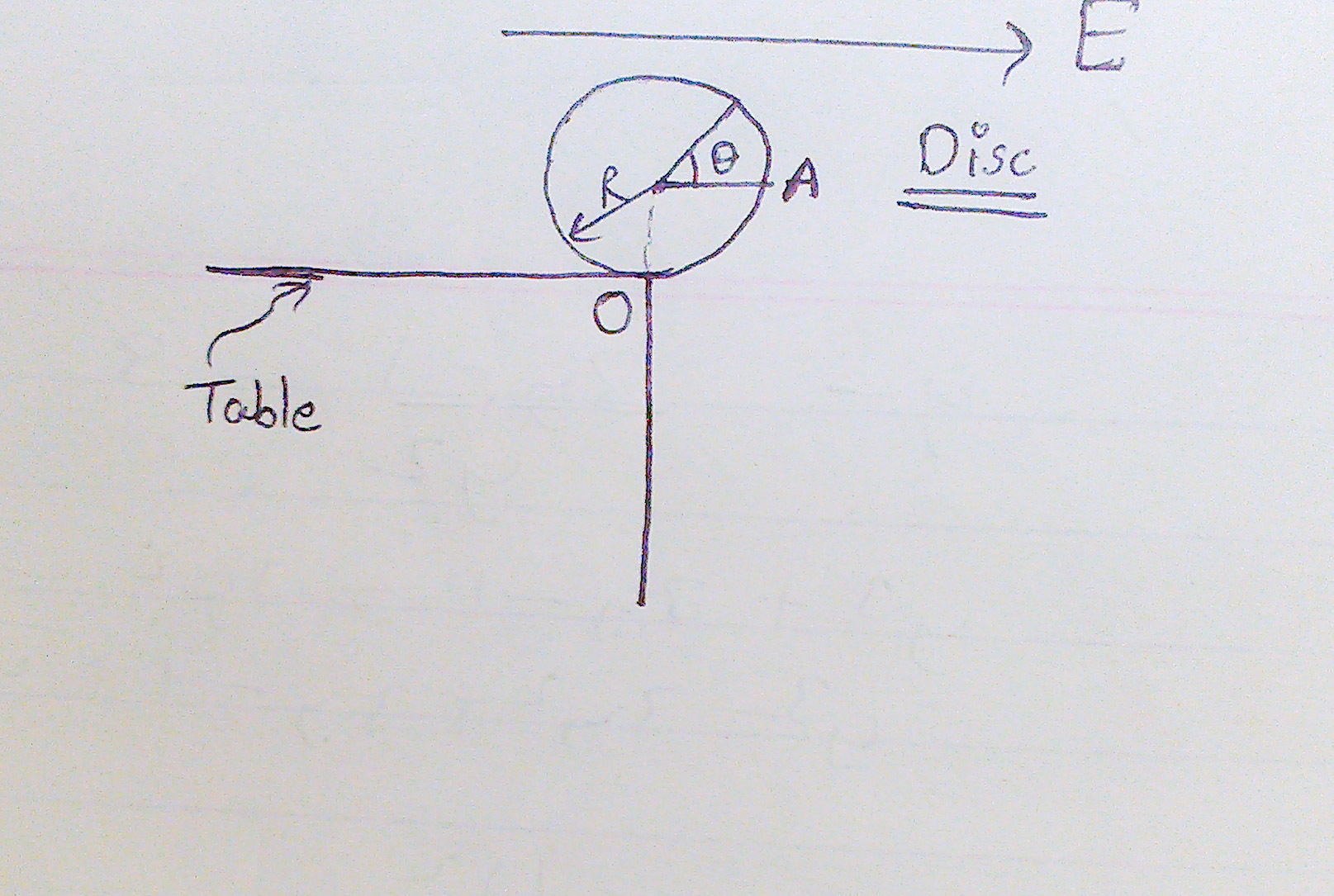Electric Disc!

A disc of mass and Radius is kept at the edge of the table. A non-uniform charge is distributed on the circumference of the disc whose linear charge density varies as ( is measured from point ). A uniform horizontal electric field exist in the region as shown.
What is the angle the disc makes with the vertical when it loses contact with the table.
Your answer can be represented as .
Enter your answer as .
Details and Assumptions :
-
Electric field , take
-
Angle ( ) is measured clockwise.
-
Disc is not a conductor.
-
a , b and c are positive integers and c is a square free integer.
-
Friction is sufficient.
Wanna! Try q on mixing of concepts click here
The answer is 56.
This section requires Javascript.
You are seeing this because something didn't load right. We suggest you, (a) try
refreshing the page, (b) enabling javascript if it is disabled on your browser and,
finally, (c)
loading the
non-javascript version of this page
. We're sorry about the hassle.
so at any general angle alpha with the vertical E can be replaced by Ecos(alpha)
so net torque at an angle alpha =ER^(2)cos(alpha)+mgRsin(alpha)
but this equals 3/2mR^{2}(Angular Acc)
Angular Acc=/ d ( a l p h a ) w d ( w )
mw^(2)r=140(sin(alpha))/3+80/3(1-cos(alpha))
{as net force due to E=O as net charge on disc=0 }
hence we write mw^{2}R=mgcos(alpha)
cos(alpha +pi/4)=4/7root(2)